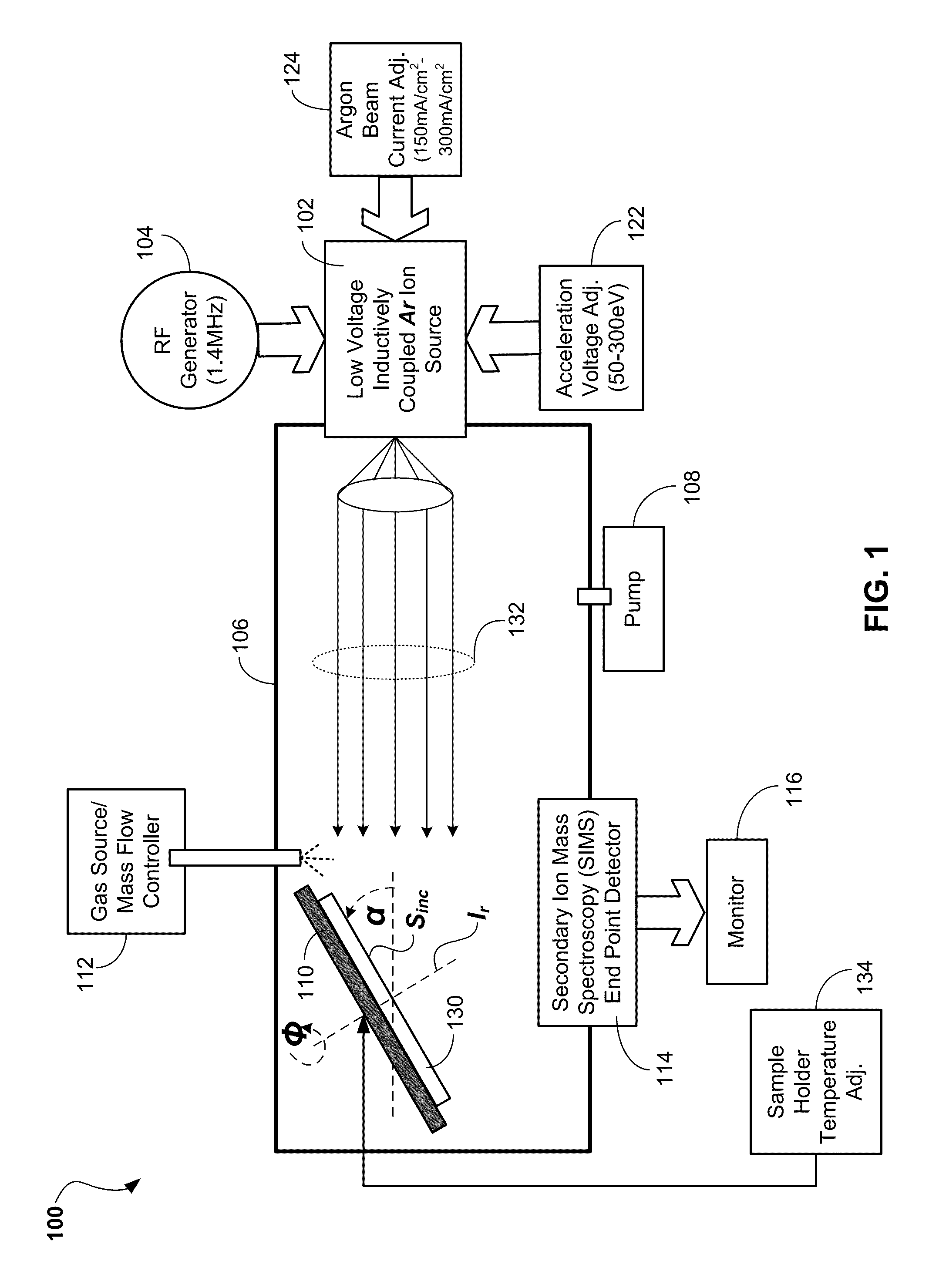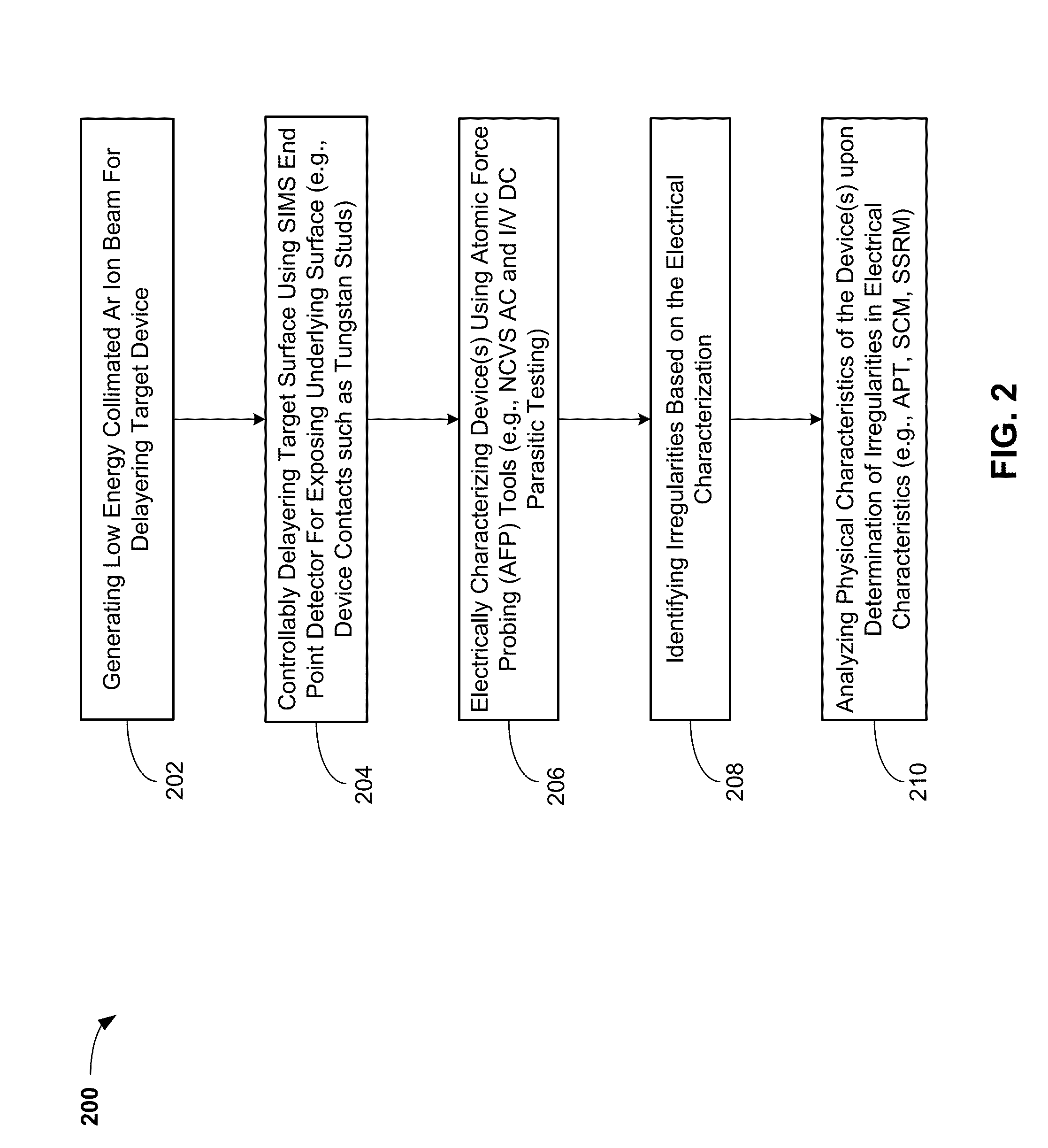Atom probe tomography sample preparation for three-dimensional (3D) semiconductor devices
a three-dimensional (3d) semiconductor and atom probe technology, applied in individual semiconductor device testing, semiconductor/solid-state device testing/measurement, instruments, etc., can solve the problems of device or structure damage, performance characteristics shift, etc., to achieve the effect of minimizing the amorphization of the surface of the crystalline surfa
- Summary
- Abstract
- Description
- Claims
- Application Information
AI Technical Summary
Benefits of technology
Problems solved by technology
Method used
Image
Examples
Embodiment Construction
[0021]The following one or more exemplary embodiments describe, among other things, a low energy ion beam milling apparatus and method utilized for the purpose of delayering the surfaces of semiconductor devices for subsequent testing and characterization of such devices. The delayering of various surfaces of semiconductor devices, particularly three-dimensional semiconductor devices such as discrete FinFet transistor devices, may inadvertently introduce defects and unwanted artifacts within the devices. For example, a high-energy 500 eV focused gallium ion beam may, during the milling and delayering process of a FET device, cause a shift in the threshold voltage (Vt) of the FET device. Additionally, the high-energy ion beam may alter dopant density or dopant distribution. In all such cases, the device may be characterized incorrectly as a result of the induced irregularities or defects that are inadvertently introduced into the semiconductor device under tests based on the ion beam...
PUM
 Login to View More
Login to View More Abstract
Description
Claims
Application Information
 Login to View More
Login to View More - R&D
- Intellectual Property
- Life Sciences
- Materials
- Tech Scout
- Unparalleled Data Quality
- Higher Quality Content
- 60% Fewer Hallucinations
Browse by: Latest US Patents, China's latest patents, Technical Efficacy Thesaurus, Application Domain, Technology Topic, Popular Technical Reports.
© 2025 PatSnap. All rights reserved.Legal|Privacy policy|Modern Slavery Act Transparency Statement|Sitemap|About US| Contact US: help@patsnap.com



